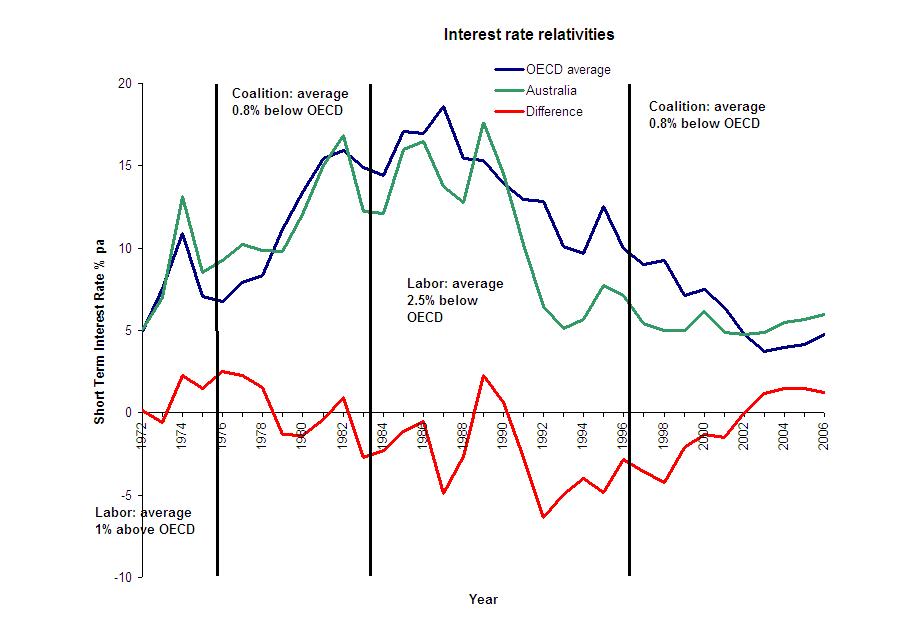A friend of mine pointed out to me (you really should get your own blog, Brian!) that the discussion of who is a better economic manager by reference to absolute levels of interest rates misses some fairly fundamental points about how much is inside the control of the people managing the Australian economy. One fairly important influence on Australian interest rates is the international level of interest rates. My economics is fairly rusty, but on effect is that if our interest rates are lower than the rest of the world, then international investors are taking a bet that our currency is going to appreciate going forward (probably because we will manage our economy relatively better).
I created the graph above comparing the Australian short term cash rate with the simple average of the OECD countries (not weighted by population or anything complex like that, from the OECD website, thanks Brian) to get the picture above. If we’re judging economic management by interest rates then this graph says to me that apart from the “Recession we had to have” blip in 1990, the Hawke-Keating government has done the best over the past 30 years, with the Howard government appearing to gradually squander our international advantage.
Caveats, of course, this misses a multitude of complexities. But not as many as the simple comparisons that have been going on.


Of course, the whole OECD! And there’s me just looking as a comparison against the US (which wasn’t particularly flash for anyone).
I tried to get together something comparing us to the US a while back because coalition scare compaigns were irritating me, but I couldn’t get figures for Australia and the US that went back far enough and had a consistent comparison. Imagine flashing this graph up at a press conference and asking for an explanation.
I notice that current Liberal “inflation rates under past governments” ads omit the period from 1975-1982, and from this graph I can see why. Thanks for the legwork!